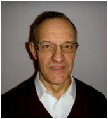
Igor Tralle
University of Rzeszow, Poland
Title: Quantum entanglement in electron ballistic transport and jaynes-cummings model
Biography
Biography: Igor Tralle
Abstract
The field of research termed as Quantum Information Theory and more specifically, Quantum Computation attracts nowadays a great deal of attention. Recently Di Vincenco [1] proposed what was called Di Vincenzo's check list, the list of requirements the quantum system has to fit in, for one has the possibility to implement on such a basis the quantum computer, the Holy Grail of those who deal with quantum information and quantum computation. These requirements are: (i) well defined qubits; (ii) relatively long decoherence times (iii) initial state preparation and some others equally important. The aim of our work is to advance new approach to producing the qubits in electron ballistic transport in low-dimensional structures such as double quantum wells or double quantum wires (DQW). The qubit would arise as a result of quantum entanglement of two specific states of electrons in DQW-structure. These two specific states are the symmetric and anti-symmetric (with respect to inversion symmetry, or mirror image) states arising due to tunneling across the structure, while entanglement could be produced and controlled by means of the source of non-classical light. Thus, in such structure one can get the two-particle pure states entanglement: in our case two subsystems are the electron (subsystem A ) which can be either in the state or in the state and the photons (subsystem B). The state is the product state if there exist such that, otherwise the state is called entangled . The product states are: where is associated with symmetric electron state and with the EM-field state characterized by the number of photons n and , where is associated with anti-symmetric one and with the EM-field state characterized by the number of photons n-1, whereas entangled states in our case are : We examined the possibility to produce quantum entanglement in the framework of Jaynes-Cummings model and have shown that the entanglement can be achieved due to striking and unusual phenomena related to Jaynes-Cummings model, namely series of ‘revivals’ and ‘collapses’ in the interaction of a quantized single-mode EM-field with a two-level system.

